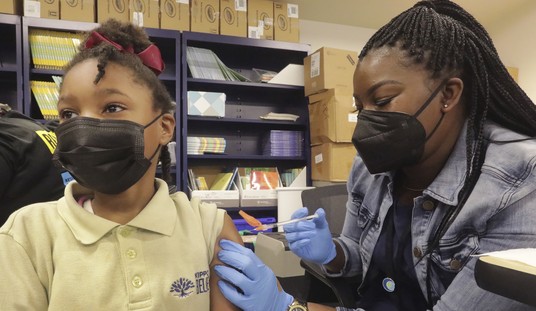Wall Street expected the news from the producer price index (PPI) report to be unpleasant. The actual numbers on wholesale inflation turned out twice as bad as they expected. “It’s much bigger than we anticipated,” Rick Santelli remarked as the monthly PPI rose 1% and year-on-year PPI inflation went up 9.7%:
Prices at the wholesale level jumped twice the expected level in January as inflation pressures were unabated to start the year, the Labor Department said Tuesday.
The producer price index, which measures final-demand goods and services, increased 1% for the month, against the Dow Jones estimate for 0.5%. Over the past 12 months the gauge rose an unadjusted 9.7%, close to a record in data going back to 2010.
Excluding food, energy and trade services, co-called core PPI increased 0.9% for the month, well ahead of the 0.4% estimate. For the 12-month period, the measure increased 6.9%. Both core and headline PPI gains over the year were 0.1 percentage point lower than the record levels hit in December 2021.
As has been the case through much of the pandemic era, goods prices outweighed those for services, rising 1.3% and 0.7% respectively.
In other words, the CNBC panel explains, the argument that we have hit “peak inflation” is nonsense. “There is nothing inside these numbers,” Steve Liesman tells the panel, “that indicates that this is the peak.” It certainly doesn’t indicate that inflation will “taper off,” as Joe Biden said “14 Nobel laureates” told him in his interview with Lester Holt.
In fact, this report makes it clear that the inflationary wave is gathering strength, “especially up the pipeline,” as Liesman notes. These price increases will have to get passed to consumers, which means that we’re getting a good look at the near-term track of the CPI. Don’t forget that inflation is both cumulative and compounding, which means that having two months in a row of this level of inflation is not a plateau.
On top of that, Santelli notes, the manufacturing sector looks a lot weaker than expected:
- The headline NY Fed Index rose less than expected to 3.1 in February versus forecasts for a rise to 12.15.
- The dollar has been weakening in response to the data, perhaps more due to easing Core PPI price pressures (YoY).
The New York Fed’s Empire State Current Business Conditions Index rose to 3.1 in February from -0.7 in January, well below the expected rebound to 12.15. The New Orders Index rose to 1.4 from -5.0 in January, the Prices Paid Index fell slightly to 76.6 from 76.7, the Employment Index rose to 23.1 from 16.1 and the Six-month Business Conditions Index rose to 28.2 from 35.1.
In other words, we may not have hit stagflation yet, but that’s the direction we’re moving in.
Now the big question will be what the Federal Reserve will do. They pushed off the idea of any action until their mid-March meeting, but this PPI result will increase pressure for an immediate contraction of the monetary supply in some form. With the White House spinning its wheels and Congress mired in a spend-o-rama mindset, the Fed is the only mechanism left to contain this inflationary wave — and that won’t be pretty. The longer the Fed waits, the uglier it gets, too.








Join the conversation as a VIP Member